· Sterile Drugs
· Medical Devices
· Biologics
Pharmaceutical Sterility Testing Product Type Format Outlook (USD Billion, 2018-2032)
· Instruments
· Kits & Reagents
· Services
Pharmaceutical Sterility Testing Type Outlook (USD Billion, 2018-2032)
· In-house
· Outsourcing
· Sterility Testing
· Bioburden Testing
· Bacterial Endotoxin Testing
· Compounding Pharmacies
· Medical Devices Companies
· Pharmaceutical Companies
· North America Outlook (USD Billion, 2018-2032)
o North America Pharmaceutical Sterility Testing by Sample
§ Sterile Drugs
§ Medical Devices
§ Biologics
o North America Pharmaceutical Sterility Testing by Product Type Format
§ Instruments
§ Kits & Reagents
§ Services
o North America Pharmaceutical Sterility Testing by Type
§ In-House
§ Outsourcing
o North America Pharmaceutical Sterility Testing by Test Type
§ Sterility Testing
§ Bioburden Testing
§ Bacterial Endotoxin Testing
o North America Pharmaceutical Sterility Testing by End User
§ Compounding Pharmacies
§ Medical Devices Companies
§ Pharmaceutical Companies
o US Outlook (USD Billion, 2018-2032)
o US Pharmaceutical Sterility Testing by Sample
§ Sterile Drugs
§ Medical Devices
§ Biologics
o US Pharmaceutical Sterility Testing by Product Type Format
§ Instruments
§ Kits & Reagents
§ Services
o US Pharmaceutical Sterility Testing by Type
§ In-House
§ Outsourcing
o US Pharmaceutical Sterility Testing by Test Type
§ Sterility Testing
§ Bioburden Testing
§ Bacterial Endotoxin Testing
o US Pharmaceutical Sterility Testing by End User
§ Compounding Pharmacies
§ Medical Devices Companies
§ Pharmaceutical Companies
o CANADA Outlook (USD Billion, 2018-2032)
o CANADA Pharmaceutical Sterility Testing by Sample
§ Sterile Drugs
§ Medical Devices
§ Biologics
o CANADA Pharmaceutical Sterility Testing by Product Type Format
§ Instruments
§ Kits & Reagents
§ Services
o CANADA Pharmaceutical Sterility Testing by Type
§ In-House
§ Outsourcing
o CANADA Pharmaceutical Sterility Testing by Test Type
§ Sterility Testing
§ Bioburden Testing
§ Bacterial Endotoxin Testing
o CANADA Pharmaceutical Sterility Testing by End User
§ Compounding Pharmacies
§ Medical Devices Companies
§ Pharmaceutical Companies
· Europe Outlook (USD Billion, 2018-2032)
o Europe Pharmaceutical Sterility Testing by Sample
§ Sterile Drugs
§ Medical Devices
§ Biologics
o Europe Pharmaceutical Sterility Testing by Product Type Format
§ Instruments
§ Kits & Reagents
§ Services
o Europe Pharmaceutical Sterility Testing by Type
§ In-House
§ Outsourcing
o Europe Pharmaceutical Sterility Testing by Test Type
§ Sterility Testing
§ Bioburden Testing
§ Bacterial Endotoxin Testing
o Europe Pharmaceutical Sterility Testing by End User
§ Compounding Pharmacies
§ Medical Devices Companies
§ Pharmaceutical Companies
o Germany Outlook (USD Billion, 2018-2032)
o Germany Pharmaceutical Sterility Testing by Sample
§ Sterile Drugs
§ Medical Devices
§ Biologics
o Germany Pharmaceutical Sterility Testing by Product Type Format
§ Instruments
§ Kits & Reagents
§ Services
o Germany Pharmaceutical Sterility Testing by Type
§ In-House
§ Outsourcing
o Germany Pharmaceutical Sterility Testing by Test Type
§ Sterility Testing
§ Bioburden Testing
§ Bacterial Endotoxin Testing
o Germany Pharmaceutical Sterility Testing by End User
§ Compounding Pharmacies
§ Medical Devices Companies
§ Pharmaceutical Companies
o France Outlook (USD Billion, 2018-2032)
o France Pharmaceutical Sterility Testing by Sample
§ Sterile Drugs
§ Medical Devices
§ Biologics
o France Pharmaceutical Sterility Testing by Product Type Format
§ Instruments
§ Kits & Reagents
§ Services
o France Pharmaceutical Sterility Testing by Type
§ In-House
§ Outsourcing
o France Pharmaceutical Sterility Testing by Test Type
§ Sterility Testing
§ Bioburden Testing
§ Bacterial Endotoxin Testing
o France Pharmaceutical Sterility Testing by End User
§ Compounding Pharmacies
§ Medical Devices Companies
§ Pharmaceutical Companies
o UK Outlook (USD Billion, 2018-2032)
o UK Pharmaceutical Sterility Testing by Sample
§ Sterile Drugs
§ Medical Devices
§ Biologics
o UK Pharmaceutical Sterility Testing by Product Type Format
§ Instruments
§ Kits & Reagents
§ Services
o UK Pharmaceutical Sterility Testing by Type
§ In-House
§ Outsourcing
o UK Pharmaceutical Sterility Testing by Test Type
§ Sterility Testing
§ Bioburden Testing
§ Bacterial Endotoxin Testing
o UK Pharmaceutical Sterility Testing by End User
§ Compounding Pharmacies
§ Medical Devices Companies
§ Pharmaceutical Companies
o ITALY Outlook (USD Billion, 2018-2032)
o ITALY Pharmaceutical Sterility Testing by Sample
§ Sterile Drugs
§ Medical Devices
§ Biologics
o ITALY Pharmaceutical Sterility Testing by Product Type Format
§ Instruments
§ Kits & Reagents
§ Services
o ITALY Pharmaceutical Sterility Testing by Type
§ In-House
§ Outsourcing
o ITALY Pharmaceutical Sterility Testing by Test Type
§ Sterility Testing
§ Bioburden Testing
§ Bacterial Endotoxin Testing
o ITALY Pharmaceutical Sterility Testing by End User
§ Compounding Pharmacies
§ Medical Devices Companies
§ Pharmaceutical Companies
o SPAIN Outlook (USD Billion, 2018-2032)
o Spain Pharmaceutical Sterility Testing by Sample
§ Sterile Drugs
§ Medical Devices
§ Biologics
o Spain Pharmaceutical Sterility Testing by Product Type Format
§ Instruments
§ Kits & Reagents
§ Services
o Spain Pharmaceutical Sterility Testing by Type
§ In-House
§ Outsourcing
o Spain Pharmaceutical Sterility Testing by Test Type
§ Sterility Testing
§ Bioburden Testing
§ Bacterial Endotoxin Testing
o Spain Pharmaceutical Sterility Testing by End User
§ Compounding Pharmacies
§ Medical Devices Companies
§ Pharmaceutical Companies
o Rest Of Europe Outlook (USD Billion, 2018-2032)
o Rest Of Europe Pharmaceutical Sterility Testing by Sample
§ Sterile Drugs
§ Medical Devices
§ Biologics
o REST OF EUROPE Pharmaceutical Sterility Testing by Product Type Format
§ Instruments
§ Kits & Reagents
§ Services
o REST OF EUROPE Pharmaceutical Sterility Testing by Type
§ In-House
§ Outsourcing
o REST OF EUROPE Pharmaceutical Sterility Testing by Test Type
§ Sterility Testing
§ Bioburden Testing
§ Bacterial Endotoxin Testing
o REST OF EUROPE Pharmaceutical Sterility Testing by End User
§ Compounding Pharmacies
§ Medical Devices Companies
§ Pharmaceutical Companies
· Asia-Pacific Outlook (USD Billion, 2018-2032)
o Asia-Pacific Pharmaceutical Sterility Testing by Sample
§ Sterile Drugs
§ Medical Devices
§ Biologics
o Asia-Pacific Pharmaceutical Sterility Testing by Product Type Format
§ Instruments
§ Kits & Reagents
§ Services
o Asia-Pacific Pharmaceutical Sterility Testing by Type
§ In-house
§ Outsourcing
o Asia-Pacific Pharmaceutical Sterility Testing by Test Type
§ Sterility Testing
§ Bioburden Testing
§ Bacterial Endotoxin Testing
o Asia-Pacific Pharmaceutical Sterility Testing by End User
§ Compounding Pharmacies
§ Medical Devices Companies
§ Pharmaceutical Companies
o China Outlook (USD Billion, 2018-2032)
o China Pharmaceutical Sterility Testing by Sample
§ Sterile Drugs
§ Medical Devices
§ Biologics
o China Pharmaceutical Sterility Testing by Product Type Format
§ Instruments
§ Kits & Reagents
§ Services
o China Pharmaceutical Sterility Testing by Type
§ In-House
§ Outsourcing
o China Pharmaceutical Sterility Testing by Test Type
§ Sterility Testing
§ Bioburden Testing
§ Bacterial Endotoxin Testing
o China Pharmaceutical Sterility Testing by End User
§ Compounding Pharmacies
§ Medical Devices Companies
§ Pharmaceutical Companies
o Japan Outlook (USD Billion, 2018-2032)
o Japan Pharmaceutical Sterility Testing by Sample
§ Sterile Drugs
§ Medical Devices
§ Biologics
o Japan Pharmaceutical Sterility Testing by Product Type Format
§ Instruments
§ Kits & Reagents
§ Services
o Japan Pharmaceutical Sterility Testing by Type
§ In-House
§ Outsourcing
o Japan Pharmaceutical Sterility Testing by Test Type
§ Sterility Testing
§ Bioburden Testing
§ Bacterial Endotoxin Testing
o Japan Pharmaceutical Sterility Testing by End User
§ Compounding Pharmacies
§ Medical Devices Companies
§ Pharmaceutical Companies
o India Outlook (USD Billion, 2018-2032)
o India Pharmaceutical Sterility Testing by Sample
§ Sterile Drugs
§ Medical Devices
§ Biologics
o India Pharmaceutical Sterility Testing by Product Type Format
§ Instruments
§ Kits & Reagents
§ Services
o India Pharmaceutical Sterility Testing by Type
§ In-House
§ Outsourcing
o India Pharmaceutical Sterility Testing by Test Type
§ Sterility Testing
§ Bioburden Testing
§ Bacterial Endotoxin Testing
o India Pharmaceutical Sterility Testing by End User
§ Compounding Pharmacies
§ Medical Devices Companies
§ Pharmaceutical Companies
o Australia Outlook (USD Billion, 2018-2032)
o Australia Pharmaceutical Sterility Testing by Sample
§ Sterile Drugs
§ Medical Devices
§ Biologics
o Australia Pharmaceutical Sterility Testing by Product Type Format
§ Instruments
§ Kits & Reagents
§ Services
o Australia Pharmaceutical Sterility Testing by Type
§ In-House
§ Outsourcing
o Australia Pharmaceutical Sterility Testing by Test Type
§ Sterility Testing
§ Bioburden Testing
§ Bacterial Endotoxin Testing
o Australia Pharmaceutical Sterility Testing by End User
§ Compounding Pharmacies
§ Medical Devices Companies
§ Pharmaceutical Companies
o Rest of Asia-Pacific Outlook (USD Billion, 2018-2032)
o Rest of Asia-Pacific Pharmaceutical Sterility Testing by Sample
§ Sterile Drugs
§ Medical Devices
§ Biologics
o Rest of Asia-Pacific Pharmaceutical Sterility Testing by Product Type Format
§ Instruments
§ Kits & Reagents
§ Services
o Rest of Asia-Pacific Pharmaceutical Sterility Testing by Type
§ In-House
§ Outsourcing
o Rest of Asia-Pacific Pharmaceutical Sterility Testing by Test Type
§ Sterility Testing
§ Bioburden Testing
§ Bacterial Endotoxin Testing
o Rest of Asia-Pacific Pharmaceutical Sterility Testing by End User
§ Compounding Pharmacies
§ Medical Devices Companies
§ Pharmaceutical Companies
· Rest of the World Outlook (USD Billion, 2018-2032)
o Rest of the World Pharmaceutical Sterility Testing by Sample
§ Sterile Drugs
§ Medical Devices
§ Biologics
o Rest of the World Pharmaceutical Sterility Testing by Product Type Format
§ Instruments
§ Kits & Reagents
§ Services
o Rest of the World Pharmaceutical Sterility Testing by Type
§ In-House
§ Outsourcing
o Rest of the World Pharmaceutical Sterility Testing by Test Type
§ Sterility Testing
§ Bioburden Testing
§ Bacterial Endotoxin Testing
o Rest of the World Pharmaceutical Sterility Testing by End User
§ Compounding Pharmacies
§ Medical Devices Companies
§ Pharmaceutical Companies
o Middle East Outlook (USD Billion, 2018-2032)
o Middle East Pharmaceutical Sterility Testing by Sample
§ Sterile Drugs
§ Medical Devices
§ Biologics
o Middle East Pharmaceutical Sterility Testing by Product Type Format
§ Instruments
§ Kits & Reagents
§ Services
o Middle East Pharmaceutical Sterility Testing by Type
§ In-House
§ Outsourcing
o Middle East Pharmaceutical Sterility Testing by Test Type
§ Sterility Testing
§ Bioburden Testing
§ Bacterial Endotoxin Testing
o Middle East Pharmaceutical Sterility Testing by End User
§ Compounding Pharmacies
§ Medical Devices Companies
§ Pharmaceutical Companies
o Africa Outlook (USD Billion, 2018-2032)
o Africa Pharmaceutical Sterility Testing by Sample
§ Sterile Drugs
§ Medical Devices
§ Biologics
o Africa Pharmaceutical Sterility Testing by Product Type Format
§ Instruments
§ Kits & Reagents
§ Services
o Africa Pharmaceutical Sterility Testing by Type
§ In-House
§ Outsourcing
o Africa Pharmaceutical Sterility Testing by Test Type
§ Sterility Testing
§ Bioburden Testing
§ Bacterial Endotoxin Testing
o Africa Pharmaceutical Sterility Testing by End User
§ Compounding Pharmacies
§ Medical Devices Companies
§ Pharmaceutical Companies
o Latin America Outlook (USD Billion, 2018-2032)
o Latin America Pharmaceutical Sterility Testing by Sample
§ Sterile Drugs
§ Medical Devices
§ Biologics
o Latin America Pharmaceutical Sterility Testing by Product Type Format
§ Instruments
§ Kits & Reagents
§ Services
o Latin America Pharmaceutical Sterility Testing by Type
§ In-House
§ Outsourcing
o Latin America Pharmaceutical Sterility Testing by Test Type
§ Sterility Testing
§ Bioburden Testing
§ Bacterial Endotoxin Testing
o Latin America Pharmaceutical Sterility Testing by End User
§ Compounding Pharmacies
§ Medical Devices Companies
§ Pharmaceutical Companies

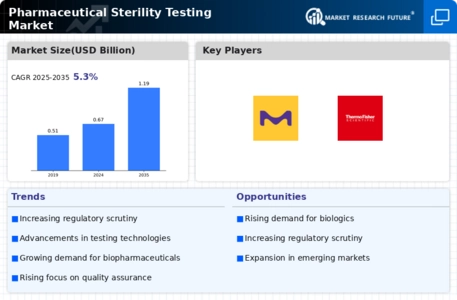

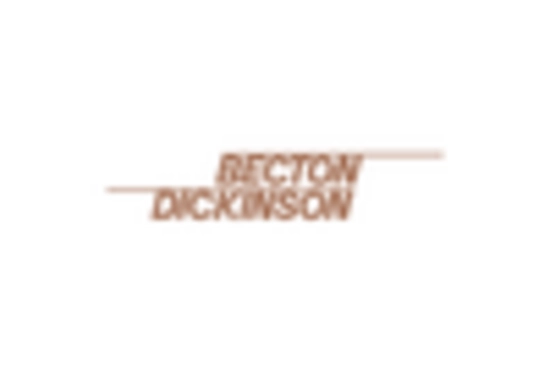
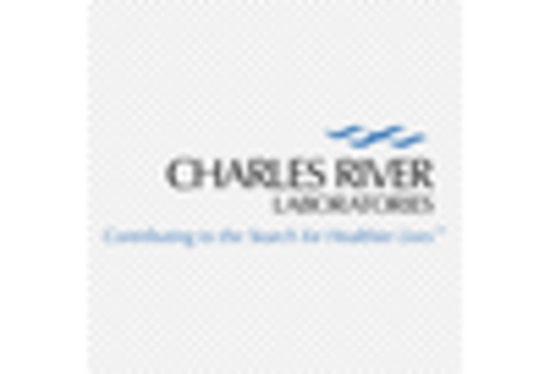
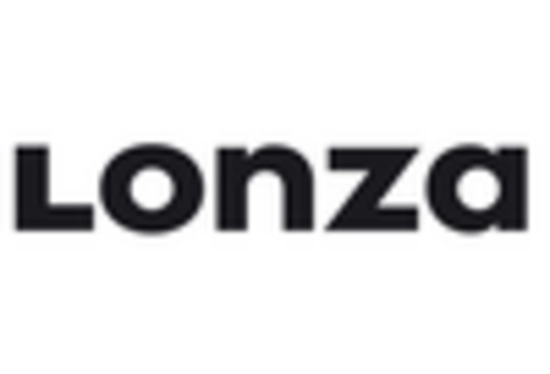

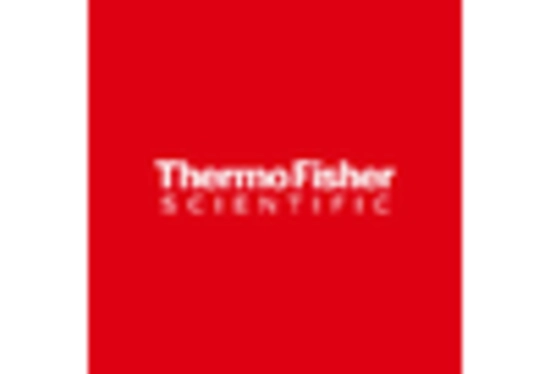
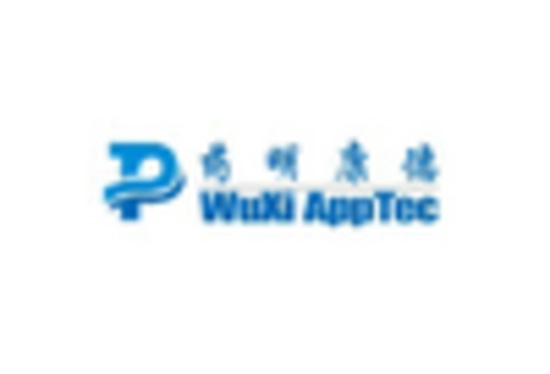

Leave a Comment